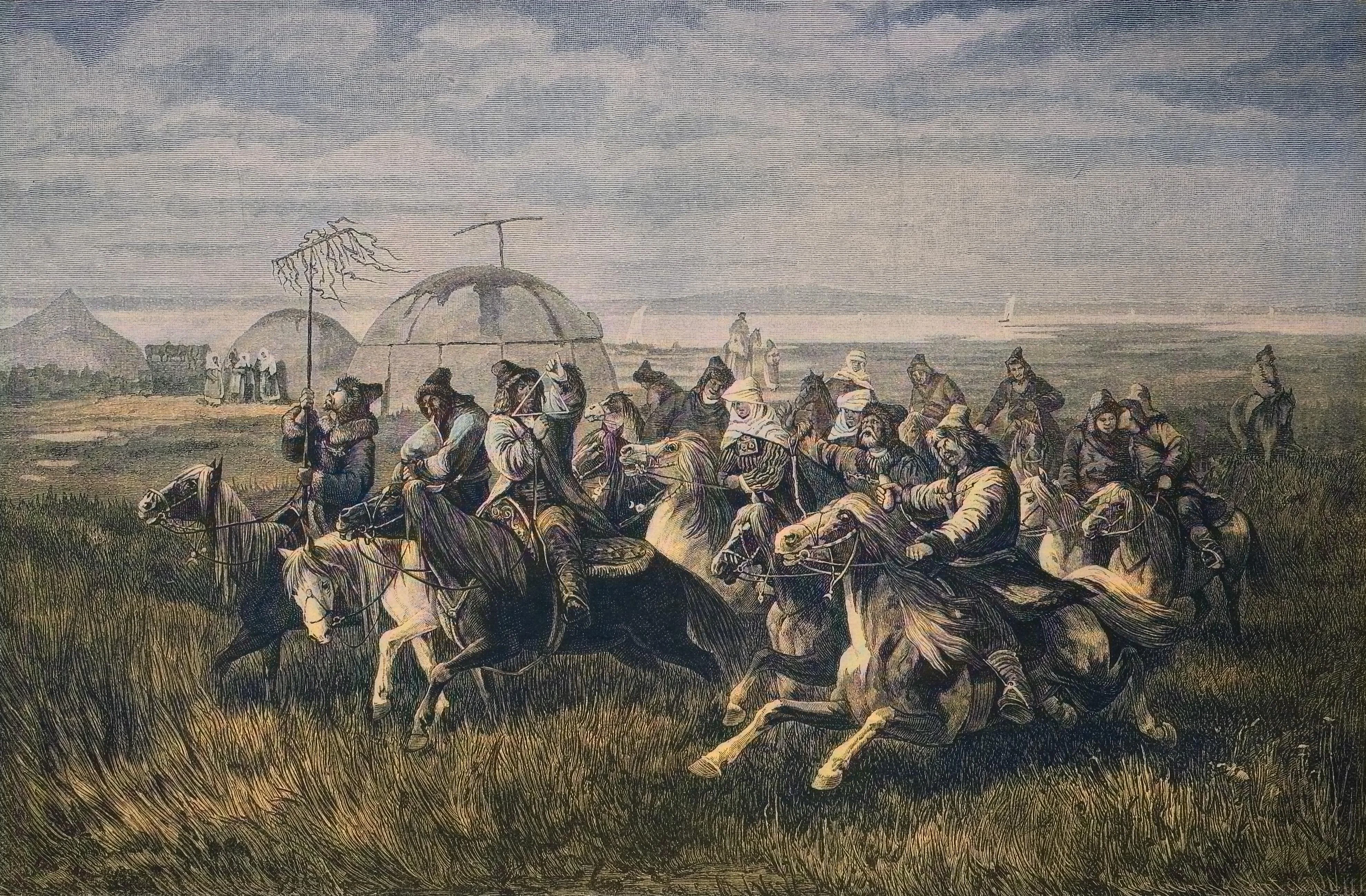
Wedding celebration at the Kalmyks. 19th century / Bildagentur-online / Universal Images Group / Getty Images

Gu Hongzhong. Night Revels of Han Xizai (detail). The original 10th-century work no longer survives; this version is a 12th century Song Dynasty copy / Photo by Pictures from History / Universal Images Group / Getty Images

Detail from Banquet and Concert, depicting elegant ladies of the Tang imperial court enjoying a feast and music. China, 10th century / Werner Forman / Universal Images Group / Getty Images
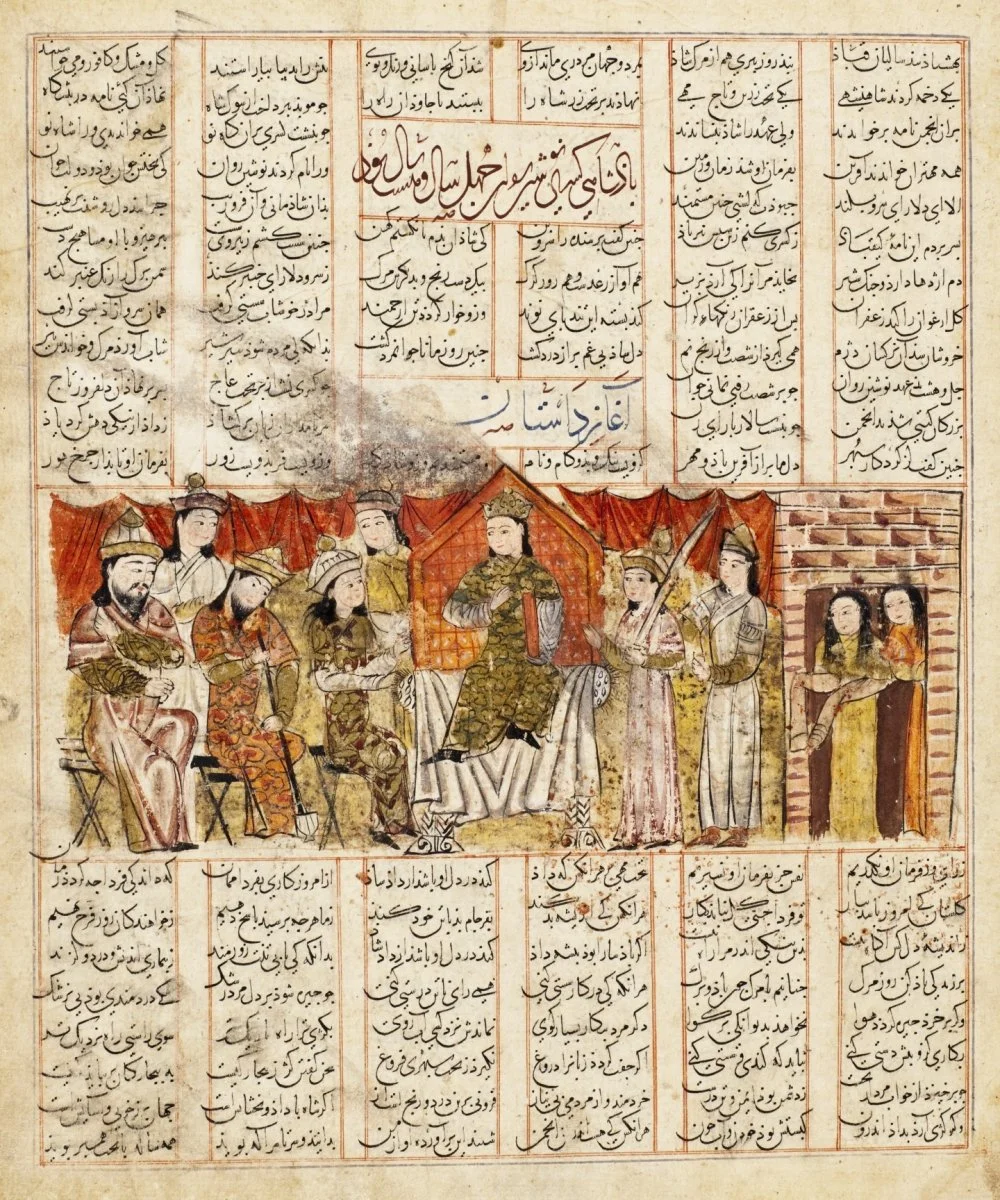
King Khusraw Anushirvan Enthroned. Page from a manuscript of the Shahnama (Book of Kings) by Ferdowsi, ca. 1341, Iran, Shiraz / Los Angeles County Museum of Art (LACMA) / Wikimedia Commons
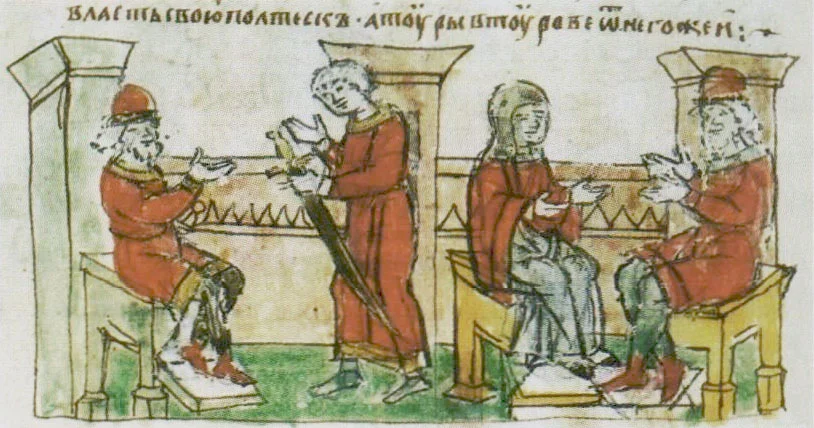
Miniature from the Radziwill Chronicle: on the left — envoys of Vladimir of Novgorod visiting Rogvolod of Polotsk; on the right — Rogvolod speaks with Rogneda, who refused to marry Vladimir. Rogneda was the daughter of Knaz Rogvolod, a ruler of Polotsk in the 10th century. Some sources suggest her family had Varangian-Slavic or even Khazar ancestry. Her forced marriage to Prince Vladimir of Kievan Rus’ is an early example of political and interethnic unions in Eurasia, resonating with the later traditions of mixed marriages in steppe cultures, including the Kazakh lands / Wikimedia Commons
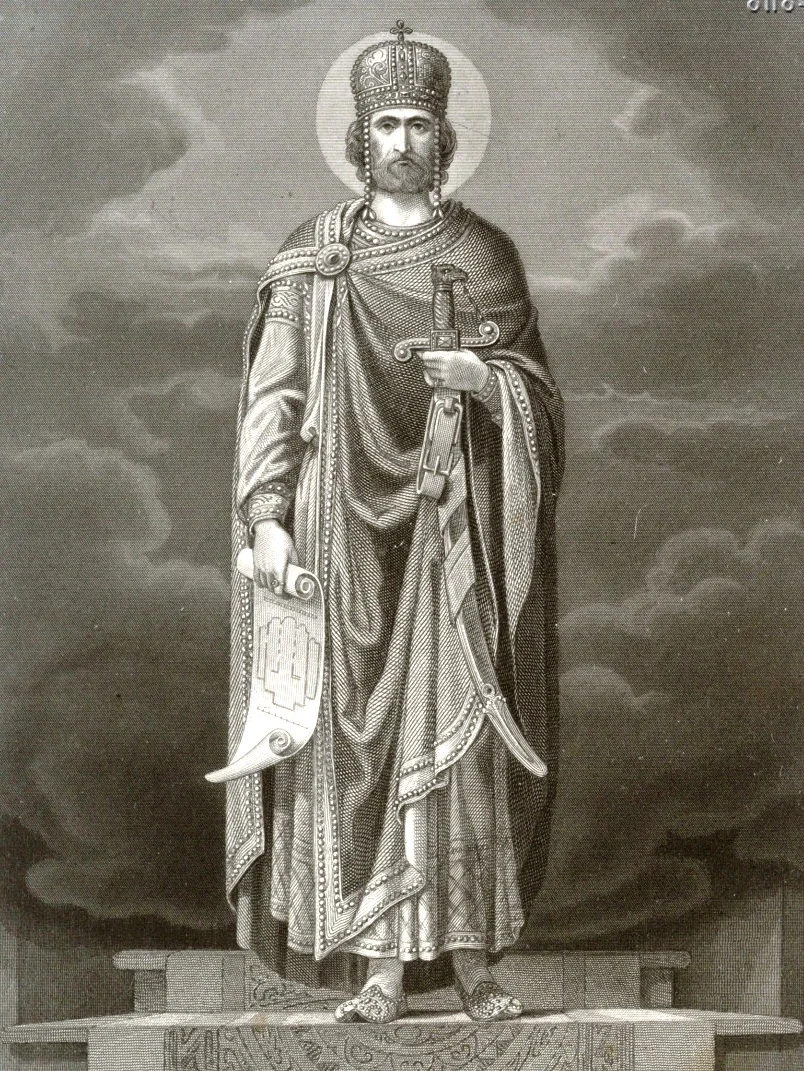
Mikhail Sabinin. St. King David IV the Builder. 1882 / Wikimedia Commons
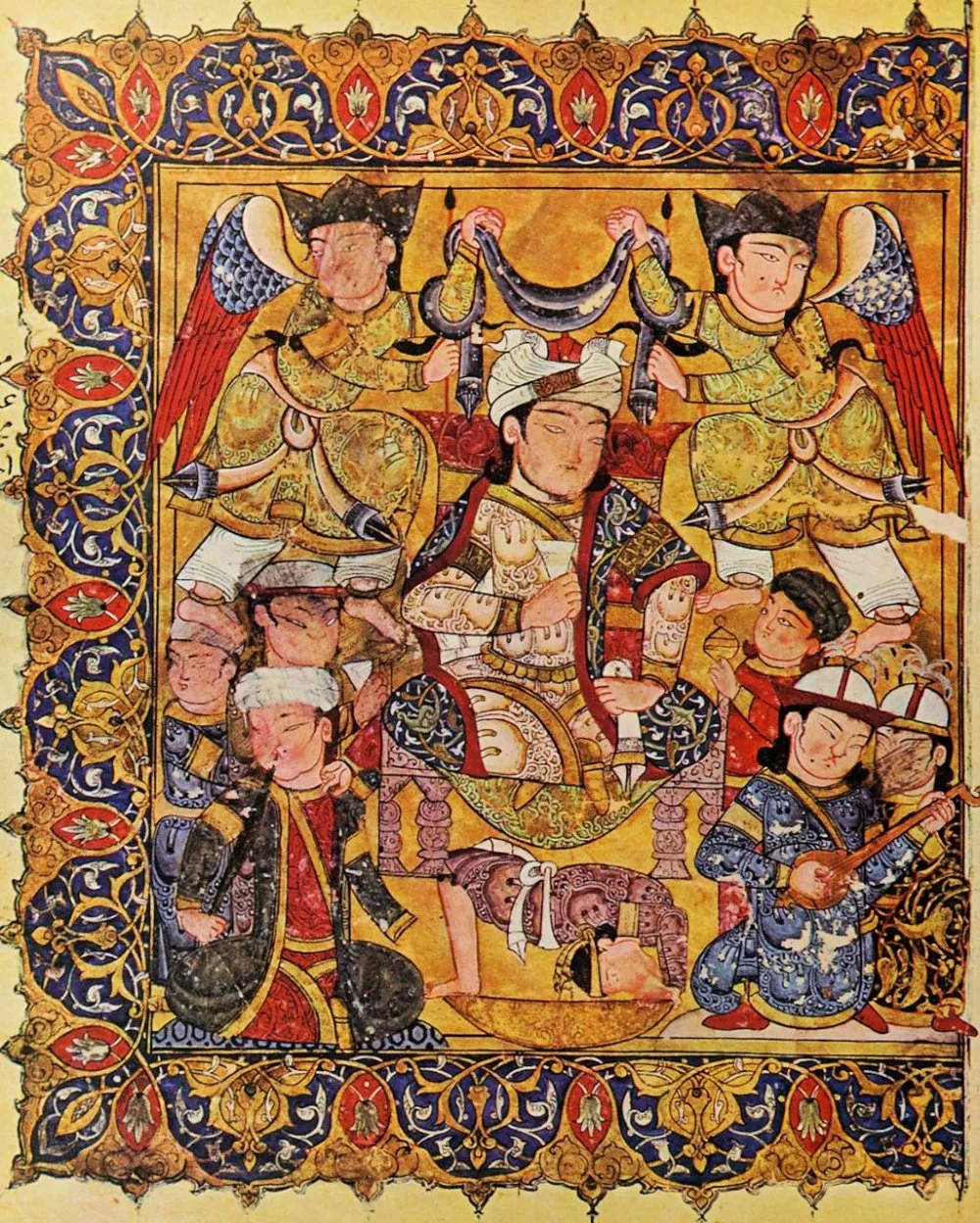
Mamluk court scene at the time of Sultan Al-Nasir Muhammad. Illustration from «Maqamat of al-Hariri» / Probably Egypt, c. 1334 / Wikimedia Commons

Vittore Carpaccio. Two Standing Women, One in Mamluk Dress / Princeton University Art Museum / Wikimedia Commons



